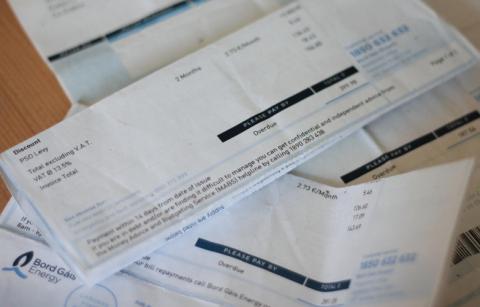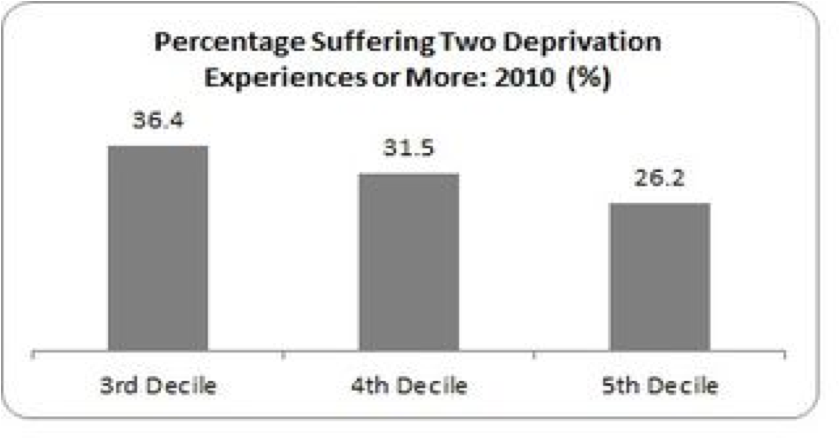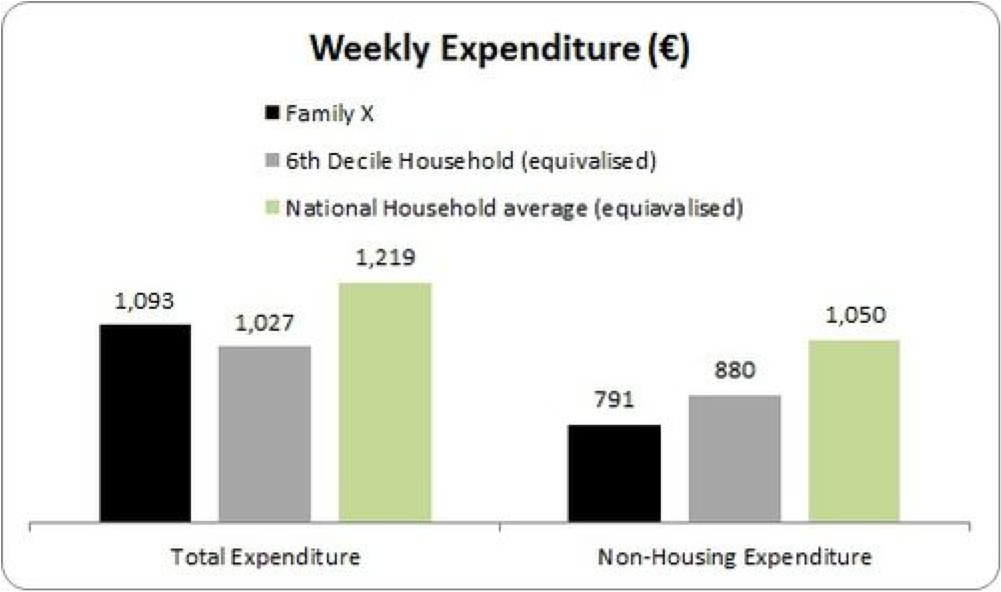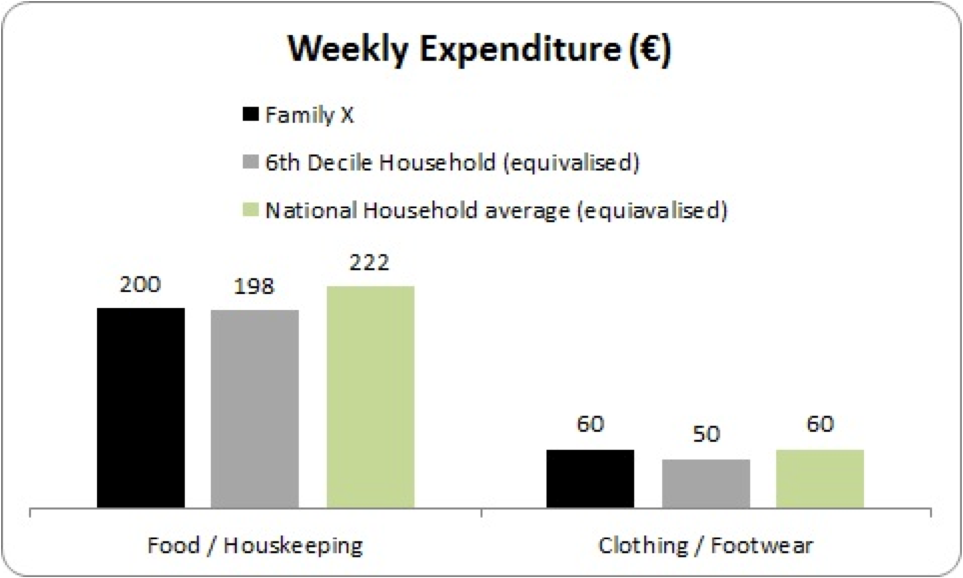The latest instalment in poverty denial

That the family featured in an Irish Times article by Kathy Sheridan last week is going through seriously difficult times is, unfortunately, becoming ever more ordinary for hundreds of thousands of households. So why is Eilis O’Hanlon having such a go at them in the Sunday Independent? By Michael Taft.
Is there no limit to the extent to which poverty deniers will twist and misrepresent facts to fit their agenda? If Eilis O’Hanlon’s piece in the Sunday Independent is anything to go by, probably not. I usually don’t write about Sindo pieces – the day is too short; if the day were a thousand hours long, it would still be too short. I let Garibaldy do the heavy lifting in responding to Sindo nonsense (he does it with far greater patience than I could). But O’Hanlon’s piece – mocking people who are experiencing deprivation, labelling them pawns and refusing to face up to the elephant-fact in the room: that austerity is driving people into despair - this kind of thing should not go unchallenged.
O’Hanlon takes issue with the Irish Times article, written by Kathy Sheridan, about a family who had gone to the Money Advice and Budgeting Service (Mabs) because they were finding it extremely difficult to make ends meet. O’Hanlon purports to break down the income and expenditure of this couple as reported by Sheridan, comes to a bottom line and then criticises, in a condescending tone, the couple for spending too much.
The first thing O’Hanlon does is to misrepresent the family's income figure. Sheridan is quite specific on this:
"Now, the family’s total weekly income, including child benefit, is €807 net, according to Mabs."
€807 net a week; when I punch that into my calculator I get €3,497 a month. You try it. You’ll get the same figure. What figure does O’Hanlon get? €5,080. An inflation of 45%.
The EU Survey on Income and Living Conditions estimates the proportion of the population that experiences multiple deprivation experiences by equivalised incomes. Equivalised incomes attempt to factor in household size. It does this because a single-person household earning €807 a week has a different living standard than a household with two adults and children.
So what is the equivalised income of the family Sheridan writes about (hereafter referred to as Family X), assuming that the €807 net income is valid for the CSO Survey? €271 per week. That’s assuming they have three children. Sheridan rightly doesn’t refer to the number so as to protect anonymity but it certainly appears from the piece that it is at least three children – even O’Hanlon accepts this. (NOTE: the calculations using the CSO’s equivalence scale are shown at the end of this post.)
That puts this family, in 2010, in the 4th lowest decile, or in the lower half of the table. The average in 2010 was €424 weekly. So this family earns 36% below the national equivalised average. Of course, the family’s income is in today’s numbers and the benchmarks I’m using are from 2010, the last year we have data for; however, this is unlikely to change the overall situation by much.
So what is the likelihood of suffering multiple deprivation experiences if you are in the 4th decile, according to the CSO?
 Those in the 4th decile have nearly a third of a chance of being included in the CSO deprivation rate. This compares to a national average of 22%. So there is a reasonable chance that Family X is actually suffering multiple deprivation experiences.
Those in the 4th decile have nearly a third of a chance of being included in the CSO deprivation rate. This compares to a national average of 22%. So there is a reasonable chance that Family X is actually suffering multiple deprivation experiences.
O’Hanlon writes:
“The new figures showed, for example, that the family was spending well over €1,000 a week, a huge amount by any standards, including a significant sum of €200 a week on food.”
Let’s turn to the CSO’s Household Budget Survey to test this ‘huge amount’ and ‘significant sum’ claim. The survey gives household expenditure broken down by actual disposable income. These figures come from 2009/2010 – the latest year we have data for. Family X would be placed in the 6th decile, below the national household average of €885 per week in disposable income.
While the CSO doesn’t perform this operation, I will attempt to equivalise household expenditure – because a single-person household spending €800 a week has a higher consumption level per person than a family with children spending the same amount. The following, however should be treated as indicative as I’m working from different databases with different methodologies.
6th decile households spend €776 per week. Family X spends €1,094. However, in this family there are at least five people; the average household size for the 6th decile is 3.1. The average household size nationally is 2.78. So if we equivalise the latter two upward to Family X’s size we find the following:
 In terms of total expenditure, Family X spends slightly more than other households in the 6th decile, but less than the national average. However, when we exclude housing costs – and this is a big expenditure for Family X and so many others caught in the bubble economy – we find that the family that is criticised by O’Hanlon for spending a ‘huge amount’, actually spent 10% less than households in the 6th decile and 25% less than the national average. So much for allegations of a ‘huge amount’.
In terms of total expenditure, Family X spends slightly more than other households in the 6th decile, but less than the national average. However, when we exclude housing costs – and this is a big expenditure for Family X and so many others caught in the bubble economy – we find that the family that is criticised by O’Hanlon for spending a ‘huge amount’, actually spent 10% less than households in the 6th decile and 25% less than the national average. So much for allegations of a ‘huge amount’.
O’Hanlon seems to have problems with Family X’s food and clothing budget (she claims they are spending €200 a week on food, which is misleading; the category used in Sheridan’s article is ‘Food/Housekeeping’, not just food). Anyway, let’s examine these categories.
 Family X’s expenditures are not out of line with the average and, in terms of food/housekeeping (for the latter I use Household Non-Durables in the CSO tables), it is 10% below the national equivalised average. Similarly, spending on clothing/footwear is not out of the ordinary.
Family X’s expenditures are not out of line with the average and, in terms of food/housekeeping (for the latter I use Household Non-Durables in the CSO tables), it is 10% below the national equivalised average. Similarly, spending on clothing/footwear is not out of the ordinary.
It should be noted here that the categories that Sheridan uses do not necessarily coincide with CSO listings – so families might categorise an expenditure differently. How would any family categorise bank charges, barbers and hairdressers, newspapers, books (especially for children), household repairs, household and kitchen durables?
None of this is out of the ordinary. That Family X is going through seriously difficult times is, unfortunately, becoming ever more ordinary for hundreds of thousands of households. So why is O’Hanlon having such a go at them?
“Far from being one family's personal testimony, it was blatantly political… If the children of public sector workers are going hungry, then clearly there is no more fat to trim from public sector expenditure. End of. That's why they leapt on the garda's wife as their new poster girl rather than one of the hundreds of thousands of private sector workers who've been forced into unemployment, emigration, repossession and depression, and who would dearly love to have a ‘mere’ €800 a week on which to get by, and certainly wouldn't use their unfortunate children as ideological pawns if they did… Was the Irish Times duped by a crude propaganda stunt on behalf of the public sector unions?”
Oh, lord, please save me. What it comes down to is that one of the adults in Family X works for An Garda Siochána. This is beyond logic and reason (the attack on the public sector trade unions is interesting insofar as the Garda Sergeant is not allowed to be a member of one). In short, if O’Hanlon doesn’t like your employer, If you happen to be a member of a trade union - and most trade unions have public sector members - not only will you get no sympathy from her, you’re likely to be attacked in the Sunday Independent.
For O’Hanlon, her attack was embarrassingly mistimed. This morning the League of Credit Unions published their What’s Left tracker. Some key points come across:
- 1,855,000 left with €100 or less at the end of the month after essential bills are paid
- Half of all adults now struggling to pay their bills on time
- 42% of consumers have had to borrow money to pay bills in the last 12 months
- 8 in 10 consumers are worried that they won’t be able to cope with the increasing energy costs this winter
So when O’Hanlon is attacking Family X, she is attacking hundreds of thousands of households, whether in the public or private sector, as well as those out of work. Her attempt to distort and twist a story to her own ideological agenda means she has to rubbish the experience of all those people.
Personally, I think Family X is brave. Deprivation is hidden and, for too many people, a source of personal shame. Too many people believe the deprivation and poverty they experience is a personal fault when in truth it is an economic and social phenomenon, produced by political elites who are forcing people and their families to pay for a crisis not of their making. I hope more people will come forward to tell their story and force deprivation on to the agenda.
Of course, they should be warned that if they do, there will be ideologues waiting in the long grass, ready to attack them if they dare tell their story. My advice: don’t let that deter you. The majority of people are on your side.
NOTE: Next instalment in poverty denial: no one is really homeless. All those people sleeping rough in the rain and the cold are actually well-paid public sector workers who have been ordered to do so by their trade union leaders, in collusion with RTÉ and the Irish Times.
NOTE: The CSO uses the following scale to equivalise household incomes: “The national scale attributes a weight of 1 to the first adult, 0.66 to each subsequent adult (aged 14+ living in the household) and 0.33 to each child aged less than 14.” Family X would therefore have an equivalised 2.98 in terms of assessing income. Using Household Budget Survey expenditure data, I approximate the 6th decile with a 2.25 and a national average of 1.98. To compare expenditure on an equivalised basis, I increase the respective spending up to 2.98. As stated, expenditure estimates are indicative only. There is no data specifically relating to expenditure per child by age or adult.
Image top: Eadaoin O'Sullivan.
